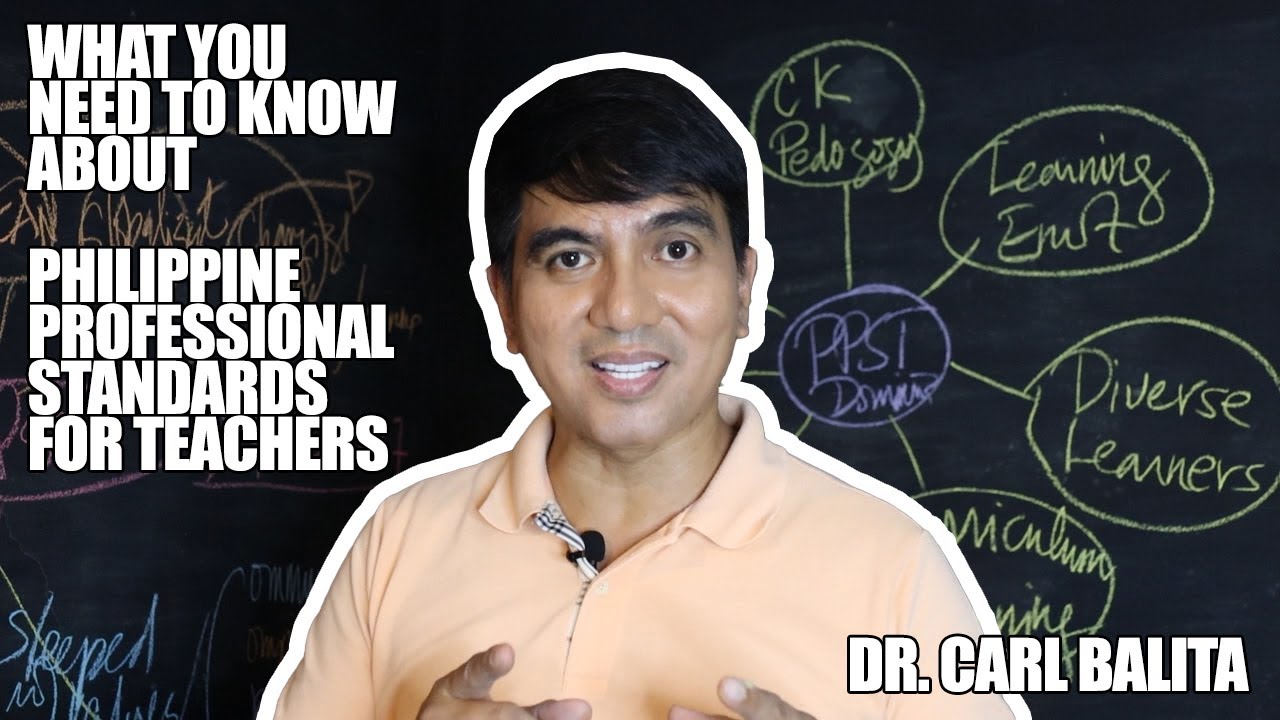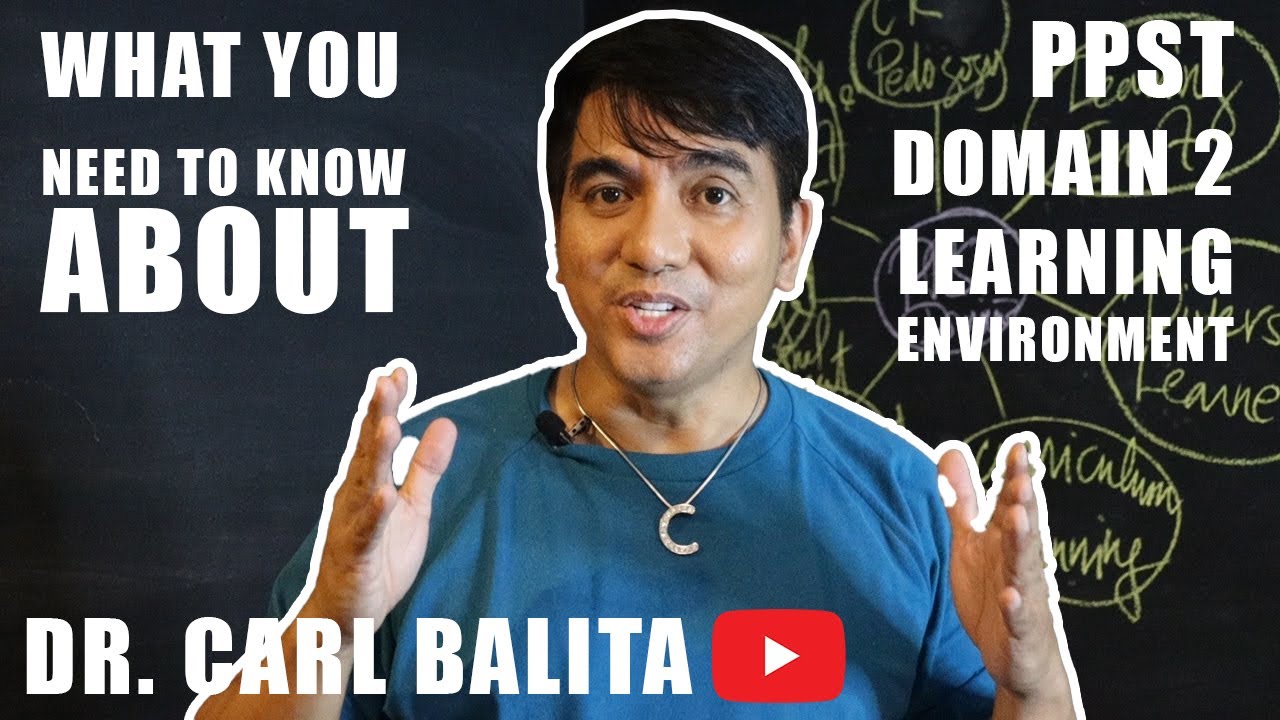PPST DOMAIN 1: CONTENT KNOWLEDGE AND PEDAGOGY | Dr Carl Balita
Summary
TLDRThe video script delves into the Philippine Professional Standards for Teachers (PPST), emphasizing the critical role of content knowledge and pedagogy as the core competency for teachers. It discusses the importance of developmentally appropriate and meaningful teaching, highlighting the need for a curriculum that is interconnected within and across subjects. The script underscores the significance of proficient language use, effective communication, teaching strategies, and technology integration in the teaching process. It also touches on the necessity of grounding teaching in research and evidence-based practices. The video encourages teachers to focus on higher-order thinking skills, differentiating instruction to meet the diverse needs of students, and ensuring that teaching is both purposeful and contextualized to enhance meaningful learning.
Takeaways
- 🎓 **Content Knowledge and Pedagogy**: This is the core competency for teachers, encompassing both the subject matter and the methods of teaching.
- 🌟 **Developmentally Appropriate Teaching**: Teaching should be tailored to the developmental stages of students, from preschool to adolescence.
- 📚 **Application of Theories and Practice**: Teachers should apply educational theories and practices, grounded in research, to their teaching methods.
- 🌐 **Proficient Language Use**: Proficiency in the mother tongue (Filipino) and English is essential for effective communication in teaching.
- 🤝 **Interconnected Curriculum**: The curriculum should be seen as interconnected, both within and across subjects, for a holistic learning experience.
- 📈 **Spiral Integration**: Subjects are repeated across grades but increase in depth and application, known as vertical and horizontal integration.
- 💬 **Communication Skills**: Teachers must understand and effectively use verbal and non-verbal communication, including body language and feedback.
- 📊 **Teaching Strategies**: Utilizing various teaching strategies is crucial and should align with the practice of educational theories.
- 💡 **Use of Technology**: Teachers should be familiar with technology integration, from entry to transformation, as outlined in the Technology Integration Matrix.
- 🧠 **Higher Order Thinking Skills**: Focus on developing students' critical thinking, creativity, and problem-solving abilities rather than just memorization.
- 📝 **Research-Based Teaching**: Teaching should be evidence-based, combining research findings with a teacher's expertise to benefit student learning.
Q & A
What is the Philippine Professional Standards for Teachers (PPST)?
-The PPST is a set of professional standards for teachers in the Philippines that includes seven domains, with the first and most important being content knowledge and pedagogy. It is designed to address the changing educational landscape, including the introduction of K-12, ASEAN integration, and globalization.
Why is content knowledge and pedagogy considered the heart of teaching?
-Content knowledge and pedagogy are at the core of teaching because they encompass the essential elements of what and how teachers educate their students. Content knowledge is the subject matter expertise, while pedagogy involves the methods and strategies used to facilitate learning.
What does 'developmentally appropriate' mean in the context of teaching?
-Developmentally appropriate refers to teaching methods and content that are suitable for the students' age, developmental level, and individual learning needs. It ensures that the teaching strategies and materials are matched to the students' cognitive and emotional readiness.
Why is the application of theories and practices in teaching important?
-The application of theories and practices is crucial as it bridges the gap between academic knowledge and real-world teaching scenarios. It allows teachers to implement evidence-based strategies and methodologies that have been proven effective through research.
How does the use of the mother tongue in early education benefit students?
-Using the mother tongue in early education helps develop a child's thinking in their native language before transitioning to English. This approach supports the development of cognitive skills and ensures that children understand and can apply what they learn in a meaningful way.
What is the significance of the interconnected curriculum in the PPST?
-An interconnected curriculum emphasizes the integration of subject matter both within a single subject (vertical integration) and across different subjects (horizontal integration). This approach helps students see the relevance and connections between different areas of knowledge.
What are the key components of effective communication in teaching?
-Effective communication in teaching involves the exchange of meaning between the teacher (sender) and the students (receiver). It includes verbal and non-verbal cues, the use of appropriate media and channels, and the importance of feedback to ensure understanding.
How does technology play a role in the modern teaching process?
-Technology enhances teaching by providing new tools and resources for instruction. It is integrated into the curriculum through various levels, from entry to transformation, and is a part of the TPACK (Technology Pedagogy Content Knowledge) model, which highlights the intersection of technology, pedagogy, and content knowledge.
Why is it important for teachers to be proficient in both Filipino and English?
-Proficiency in both Filipino and English allows teachers to communicate effectively with a diverse student population and to deliver instruction in the medium most appropriate for the content and the students' language proficiency. It also aligns with the constitutional mandate for using Filipino and English as media of instruction.
What is the role of research in grounding the theories and practices of teaching?
-Research plays a critical role in the development of educational theories and practices. It provides evidence-based insights that teachers can apply in their classrooms. Research also informs the continuous evolution of teaching methods, ensuring they remain effective and relevant.
How does a teacher ensure that their teaching is purposeful and meaningful?
-A teacher ensures purposeful and meaningful teaching by focusing on higher-order thinking skills, developing metacognitive abilities in students, and making learning contextualized and applicable to real-life situations. It also involves differentiating instruction to meet the diverse needs of students.
Outlines

This section is available to paid users only. Please upgrade to access this part.
Upgrade NowMindmap

This section is available to paid users only. Please upgrade to access this part.
Upgrade NowKeywords

This section is available to paid users only. Please upgrade to access this part.
Upgrade NowHighlights

This section is available to paid users only. Please upgrade to access this part.
Upgrade NowTranscripts

This section is available to paid users only. Please upgrade to access this part.
Upgrade NowBrowse More Related Video

Understanding the Philippine Professional Standards for Teachers (PPST Explainer Video)

PPST, Southeast Asia Teachers Competency Framework and Code of Ethics for a Professional Teacher

PPST: WHAT YOU NEED TO KNOW | Dr Carl Balita

PROF ED 5: CHAPTER 6 | Camille Kirong

PPST DOMAIN 2: LEARNING ENVIRONMENT | Dr Carl Balita

DEPED CAREER PROGRESSION | TEACHER 4-7 & UP TO MASTER TEACHER 5
5.0 / 5 (0 votes)